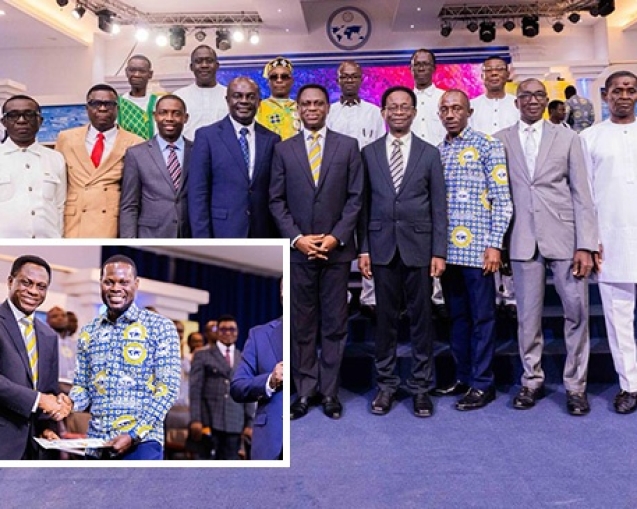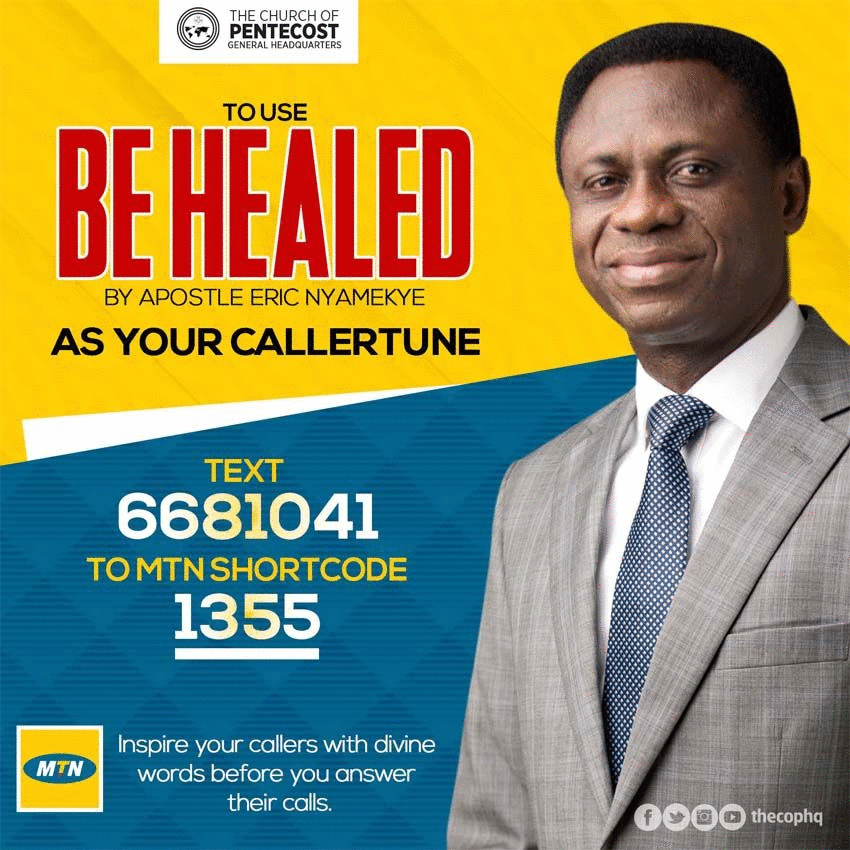Two fundamental issues form the thrust of this article: the age of the Azusa Street Revival, and the need for another great revival in contemporary Christianity. The second factor is the call for another revival in the church in this century by participants in the recent non-denominational All-Ministers’ Conference hosted by The Church of Pentecost (CoP) at the Pentecost Convention Centre (PCC), Gomoa Fetteh, Ghana.
On assumption of office as the Chairman of the CoP in 2018, Apostle Eric Nyamekye challenged Christians to pray for another revival in this century, indicating that “112 years since the Azusa Street Revival occurred is enough; can’t we have a PCC revival that is superior to the Azusa Street Revival?” Throwing this challenge further, he stated, “Seymour is dead and gone,” and we must pray for God to use us to cause a new revival in this generation.
The import of this statement was visible throughout the All-Ministers’ Conference held at PCC in September 2022 – The presence of the power of the Holy Spirit felt throughout the conference, the unity of the body of Christ, and the yearning for a new revival by the conferees was awesome. The inspiring atmosphere and the enthusiasm of pastors in participating in all activities at the conference suggested that the Christian community in Ghana is not only thirsty but also ready for a new revival that would be superior to the Azusa Street Revival.
A Reflection on the Azusa Street Revival
The Azusa Street Revival occurred in 1906 in Los Angeles, and its dramatic nature precipitated an unprecedented transformation of Christian traditions and missionary activities. The event followed the teachings and prayer meetings of William Joseph Seymour (an African-American) and a group of holiness preachers at 312 Azusa Street in Los Angeles. It must be noted that Seymour was trained by a holiness evangelist, Charles F. Parham, in Houston, Texas, but that is not the focus of this discussion.
Seymour and the holiness movement preachers felt that, since the actual Pentecost day event in AD 34 in the Acts of the Apostles, the spirit of the revival with its characteristics had waned in the church. Their focus was on speaking in tongues (glossolalia) as a sign of baptism in the Holy Spirit. Seymour and his team were, therefore, praying for another phenomenon like the day of Pentecost to occur in their generation.
Seymour taught his group that God had promised His children through the prophet Amos that in the latter days, He would pour His Spirit on all flesh (Joel 2:28, 29, cf. Ac. 2:14-21). For him, the time for the fulfillment of that promise was during their time. He was so optimistic about this promise that he prepared his group for weeks through teachings and fervent prayer meetings so that they could receive the outpouring of the Holy Spirit. Indeed, they had the expected encounter with the Holy Spirit, which manifested in speaking in tongues with signs and wonders following their ministry.
Over 100 years down the lane, Seymour’s concern has been rejuvenated in many Christian meetings today, which usually focus on praying for an unprecedented revival in our generation. With God working progressively, the yearning for a revival today that is superior to the Azusa Street Revival must be our hearts’ desire and core prayer topic.
The Significance of the Azusa Street Revival
The most significant impact of the Azusa Street Revival was the birth of Pentecostal and Charismatic movements which changed the face of Christianity. Speaking in tongues and the ecstatic phenomenon in the church were part of the signs of the Azusa Street Revival. The revival was characterised by the demonstration of the power of the Holy Spirit coupled with Spirit-led ministry activities in mission.
The effect of the Azusa Street Revival added an impetus to mission and evangelism as well as the spontaneous growth of Christianity in the twentieth century. In the aftermath of the revival, several Pentecostal churches were formed and moved so rapidly that by the turn of the twentieth century, Pentecostalism and the Charismatic movement had since become the fastest-growing Christian tradition in history.
Dramatic Events in the Azusa Street Revival
Several things followed the Azusa Street Revival. Apart from the missional significance of the revival, there were dramatic scenes that occurred. For example, on one occasion, Bishop Charles Horrison Mason (1907–1961), who had been sent by the Board of his church to investigate the purported activities of the Holy Spirit in Azusa Street, rather had an awesome encounter with the Holy Spirit. During a time of ministration by William Seymour, the bishop was baptised in the Holy Spirit and he began to speak in tongues. He was so touched by the Holy Spirit that he began to scream and plead for the forgiveness of his sin, probably of his cynicism and intention at the meeting to examine the authenticity of the revival.
This phenomenon was so common that whenever people were sent to scorn Seymour and his colleagues, the Spirit would apprehend them and, as a result, they too would stay and pray to receive their portion of the revival. This is evident in the publication of the first edition of the Apostolic Faith Magazine (1906), which describes visitors who came there in this way:
Proud, well-dressed preachers came to ‘investigate’. Soon their high looks were replaced with wonder, then conviction comes, and very often you will find them a short time wallowing on the dirty floor, asking God to forgive them and make them little children.
The above passage gives a vivid picture of the dramatic and spectacular nature of the Azusa Street Revival. Can one assign reasons why it is not good for us to keep praying for another revival in this century? Certainly not. The import of the passage is that whenever a great revival breaks out, the lives of scorners and mockers of God’s church are transformed into the image and likeness of God. They have no option but to obey God’s Word and follow His marching orders. Today, we live in the world of secularism and ungodly ideologies; a time when the call for a revival superior to Azusa Street is needed to change the narrative.
Breaking the Social Barriers
Another very significant thing about the Azusa Street Revival is the connectedness of whites and blacks who thronged to worship together under the leadership of a black African slave, William Seymour. This situation was socially and legally unacceptable in America in days when interracial gatherings had been illegalised by the Jim Crow Laws (1876-1965), especially in the Southern United States, which enjoined strict racial segregation in all public places.
Though the law recognised the equality of whites and blacks as humans, it gave the advantage of education and other social privileges to whites whom it recognised as superior to their black counterparts. Unfortunately, the majority of Americans at the time were Christians but they could not succeed in dealing with the racial segregation law until a true revival broke out to transform their society, break ungodly barriers, and replaced hatred with true love in Christ.
The inference is that when the Holy Spirit manifests himself in human affairs, He changes the social order and destroys all artificial barriers set up by humans’ depraved minds. This truth was evident in the ministry of Pastor William Joseph Seymour – which was a typical example of God’s plan for missions. It tells us that a true spiritual revival must break barriers of ethnicity, racism, gender, animosity, and all kinds of social evils and discrimination.
The events of the Azusa Street Revival show that revival should undergird our society today, particularly at a time when social tensions, conflicts, and political vendetta are becoming an order of the day. Even the Christian community, too, is experiencing divisions as a result of doctrinal differences and other factors, but our hope and burning desire for a mighty revival will change the dynamics.
Unity in diversity has always been the result of real Christian revival, just like the revival that followed the Day of Pentecost in the Acts of the Apostles when people came from various places across the world to experience the Pentecostal fire as they spoke in diverse tongues. The speaking of diverse languages in the same place as experienced on the Day of Pentecost symbolises God’s intention for unity in diversity in the body of Christ. Against this backdrop, it is time for us to respond to the charge for a new revival in our day to move the church to another level of true fellowship and genuine love towards one another as a family of God.
The Age of the Azusa Street Revival and the Call for a PCC Revival
The Azusa Street Revival is 116 years old in 2022 and there is a need for another revival as has been seen as the import of this discussion. To reiterate Apostle Eric Nyamekye’s words in 2018, “112 years since the Azusa Street Revival is enough; can’t we have a PCC revival…?” Much of our Christian tradition is a brainchild of the Azusa Street Revival. Therefore, we should not always dwell on that past glory as well enough to make a huge impact on today’s generation. We must cry out with the Psalmist, O Lord, “Will you not revive us again, that your people may rejoice in you?” (Ps. 85:6, NIV).
Is the Stage Set for Another Revival?
Yes, all indications point to the fact that a great new revival is looming! Historically, the Spanish Flu took place about twelve years after the Azusa Street Revival; thus, the juxtaposition is that we need another great revival in the face of the global pandemic in this century – COVID-19. The analogy is that if we recorded both a global pandemic and a great revival in the previous century and now, we are again being confronted with another global pandemic in our generation, then we need a revival that will send a shockwave across the globe for God’s people to rejoice as the world experiences His mighty power.
Besides, many Christians today are thirsty for revival and are continuously searching for an encounter that could satisfy their desire. We believe there is a mighty revival in the sky; it is approaching, and we must bring it down by fervent prayer and godly fellowship of the saints in Christ, regardless of our denominations and differences.
Thus, the focus of the possessing the nations’ agenda of the CoP is that the Pentecost Convention Centre (PCC) can be a place of a new wave of revival through prayer activities by Christians who access the facility. The stage for this desire and expectation was set in September 2022 when 3,000 pastors from 468 Christian denominations converged at PCC to pray for a revival and transformation of their respective ministries and the nation as a whole.
Another piece of evidence is the 2022 Royals’ Conference organised by the CoP Chieftaincy Ministry at PCC. The conference brought together 1561 chiefs and queen mothers (traditional rulers) from all over Ghana with representatives from Togo and Burkina Faso. The spiritual atmosphere at the conference was very electrifying, the display of the various cultures among the participants was, indeed, an epitome of a true description of unity in diversity, and a sense of revival was felt by the participants. The testimonies that followed the conference from the traditional rulers were awesome. The simple conclusion is that the stage is set for our highly anticipated PCC revival, and it is time for us to be consumed by the desire for another revival and dedicate ourselves to that cause by praying fervently for it.
O Lord, Will you Not Revive us Again?
Our desire is commensurate with the Psalmist’s statement: “Will you not revive us again, that your people may rejoice in you?” The understanding here is that revival leads to joy among the people of God because it brings unity to the body of Christ and transforms ungodly social orders, including corruption and injustice. This was exactly what the Christians experienced during the Azusa Street Revival when the barriers of racism in the church and society were broken.
The laws of hostility and social injustice were set aside to give way for the love of God to thrive in the church and society. A new model of global Christianity was defined through the lens of Spirit-led and Christ-centred Christian tradition. The global church was repositioned to reflect the power of God’s Kingdom in the world and the fight against sin took a unique turn. Finally, the praxes of the Christian mission were transformed. Thus, it is worth crying that “O Lord, will you not revive us again?”
Time to take Action
This is the time to be dedicated to godly fellowship and fervent prayers. A cursory observation shows that the recent All-Ministers’ conference held at PCC demonstrated the characteristics of the Azusa Street Revival. The inspiration received through various ministrations during the conference, the revival and unity experienced, and the joy of participants in the conference re-echo the call for a PCC Revival. A revival that will cause a massive transformation in Christianity today where the church will be repositioned as a Spirit-led prophetic voice to influence its society with the principles and values of God’s Kingdom.
Having been living by the Azusa Street Revival for 116 years now, the clarion call today is to rise above our diverse Christian traditions bearing with Apostle Eric Nyamekye’s assertion in the conference that “We may not all be on the same chapter, but we should be in the same book.” By the same book, he means God’s Word that brings people together to form the ecclesia (the called-out ones in Christ) community.
The Azusa Street Revival has left indelible marks on the face of the world’s Christians. Therefore, the kind of revival that we are expecting in our generation must also come along with such an indelible mark on cultures, philosophies, politics, businesses, ideologies, belief systems, human traditions, and institutions. Our expectation and prayer for the PCC Revival are to experience a Christ-centred revival, Bible-centred revival, and Spirit-led revival for a genuine transformation of church and society with values and principles of God’s Kingdom to possess the nations for Christ.
Written by Apostle Vincent Anane Denteh (vadentcop@gmail.com / 0555874497)


















